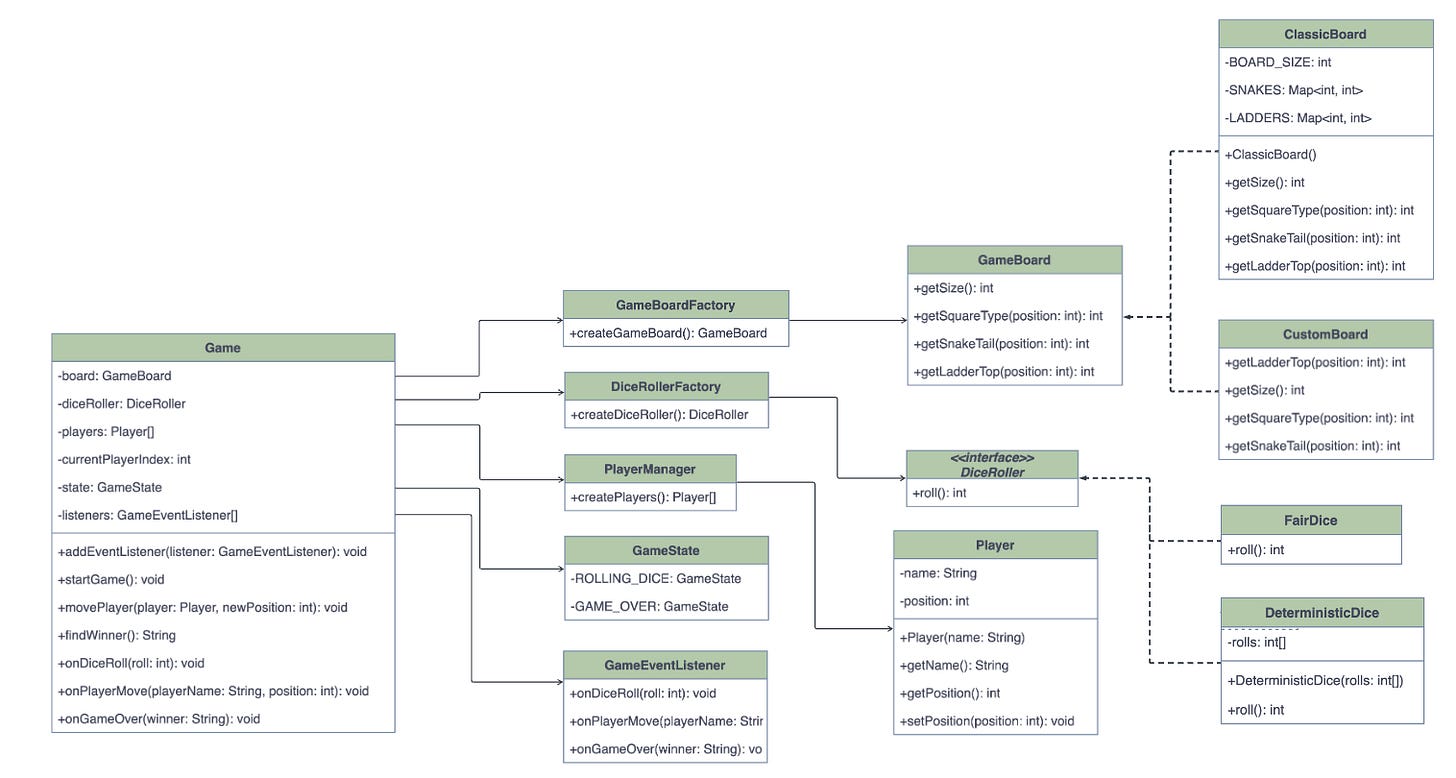Enhancing a Classic: Design Patterns in Snake & Ladders
In the realm of software development, design principles are akin to guiding stars, illuminating the path to creating efficient, scalable, and maintainable code. Among these principles, three stalwarts stand out: the Strategy, Factory, and Observer design patterns. Let me take you through how I utilised these principles in creating a dynamic and engaging Snake and Ladders game.
Understanding Design Principles:
Before delving into the specifics, let's quickly go over what these design principles entail:
Strategy Design Pattern: This pattern allows you to define a family of algorithms, encapsulate each one, and make them interchangeable. It helps in promoting loose coupling between objects and improves code maintainability by separating algorithms from the context using them.
Factory Design Pattern: The Factory pattern provides an interface for creating objects in a superclass, but allows subclasses to alter the type of objects that will be created. It is particularly useful when the client doesn't need to know the exact type of the object it creates.
Observer Design Pattern: This pattern establishes a one-to-many dependency between objects so that when one object changes state, all its dependents are notified and updated automatically. It is particularly useful in building distributed systems or when there are multiple objects that need to be updated based on changes in another object's state.
Refer to Head First Design Pattern book to learn more about other design patterns: https://www.oreilly.com/library/view/head-first-design/0596007124/
Mechanics of the game:
One essential design pattern is the observer pattern, which manages events within the game. It decouples components, ensuring that actions such as moving players and checking for encounters with ladders or snakes are handled efficiently.
The factory pattern was instrumental in creating game elements like the board and dice (we can modify it to create players as well). This pattern abstracts the creation process, making it easy to add new features or modify existing ones without extensive changes to the codebase (we can change the type of dice or game board at runtime!).
Additionally, the strategy pattern defined various gameplay mechanics, allowing for different rule sets or game modes without altering the core logic. It encapsulates different strategies for moving players (different dice roll strategies ), ensuring seamless adaptation to different versions of the game.
UML Diagram:
This diagram illustrates the relationships between various components of our game.
Refer to this Github repo for code: https://github.com/simrank0/SnakeAndLadder


